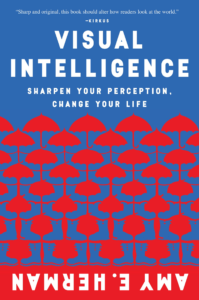
Check out the full notes for “Visual Intelligence” by Amy E. Herman
Tool: Prioritization questions
You’re looking at a murder scene. What do you focus on?
Okay it’s a still image from a murder scene in a movie you’re watching for your intro cinematography class. Now what do you focus on?
Okay you’re actually in the room of a murder scene. Except it’s an escape room. Now you’re trying to find some wacky puzzle elements.
In “Visual Intelligence”, Amy E. Herman writes about a three-question prioritization system:
Different prioritization systems will work better for different people. The one I’ve found to be the most helpful to the widest range of people I teach is the three-prong approach outlined in the CIA training manual The Psychology of Intelligence Analysis by Richard J. Heuer. To help organize data and find the most important elements of any situation, you ask three questions: What do I know? What don’t I know? If I could get more information, what do I need to know?
Let’s run those scenarios through these questions.
An actual murder scene
- What do I know? There’s blood splatter. There’s a chalk outline. We know the person died from, I don’t know, a gunshot. Since I’m not actually an investigator, there’s every other generic thing I can think of from TV and movies.
- What don’t I know? I don’t know who shot the gun. I can see bullet holes. I don’t know what kind of gun it was. I don’t know how many people were involved.
- What do I need to know? I need to know who did it. I can ask some ballistic experts, the blood splatter expert, the friends and family, and a few suspects some questions.
A murder scene in a movie
- What do I know? In Visual Intelligence, Amy E. Herman stresses the importance of separating subjective and objective observations. If you’re looking at a movie still, you can describe the colors. You can describe the composition of that frame. You can describe different objects in the scene and what they might represent.
- What don’t I know? On my own, I don’t know exactly what the director and cinematographer’s intent actually was. I enjoy 3D artist Beeple’s daily 3D creations and have listened to a few interviews with him. He’s talked about how people often ask him if there’s deeper meaning to different pieces but there rarely is. Sometimes the picture is the picture.
- What do I need to know? If you could speak directly to the people involved in making the movie, then you could verify if your reasoning behind different decisions make sense. Was the way the blood was splattered supposed to represent some underlying theme in the movie? Or was it just random. Can you read this three page theory I posted on Reddit?
A murder scene in an escape room
- What do I know? You know there’s a puzzle hiding here somewhere. You’ve done a few of these so you know that they’re usually hidden in words or numbers that look like they’re just a normal part of the scene. Hey what’s this, this jacket has a receipt in it…
- What don’t I know? You don’t know exactly where the clue is. You don’t know why someone would leave this point and shoot camera in this clear plastic padlocked box, but you’re willing to find out.
- What do I need to know? You need to know what the padlock’s code is. You need to know what the next clue is. You’ve believed it all your life but now you need to know that you’re the best clue finder in your group of friends.
I’ll try using these questions to improve in prioritization and decision making. If you like those “spot the difference” puzzles in magazines and you also like preventing international tragedies (or just want to come up with better ideas at work), you’ll love “Visual Intelligence”.
